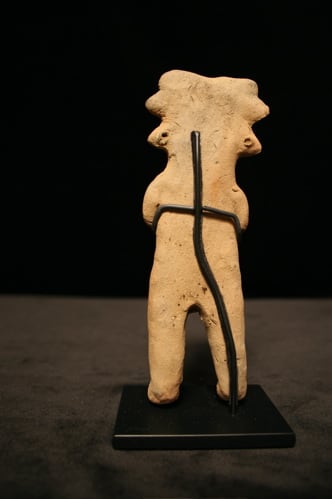Nayarit Terracotta Figure, 300 BCE - 300 CE
Terracotta
6
DC.353
The most striking works of the Nayarit subgroup are the ceramics, which were usually placed in graves, and do not seem to have performed any practical function. It is possible...
The most striking works of the Nayarit subgroup are the ceramics, which were usually placed in graves, and do not seem to have performed any practical function. It is possible that they were designed to depict the deceased – they are often very naturalistic – although it is more probable that they constituted, when in groups, a retinue of companions, protectors and servants for the hereafter. Just as in other sophisticated social systems around the world – such as the Egyptians or Dynastic China – figures were made to represent the sorts of people and resources that might be needed in the hereafter. They were in this sense symbolic of actual people, who were buried with the deceased as retainers in more sanguineous Central and Southern American societies.
This small terracotta sculpture depicts a standing figure holding their arms on their chest. Facial features have been represented with applique eyes, nose, mouth, and brows. Spikes along the sides of the head suggest ears or hair, and the lower spiky protrusions have been pierced, implying they may have originally contained earrings or other such adornments.
This small terracotta sculpture depicts a standing figure holding their arms on their chest. Facial features have been represented with applique eyes, nose, mouth, and brows. Spikes along the sides of the head suggest ears or hair, and the lower spiky protrusions have been pierced, implying they may have originally contained earrings or other such adornments.



